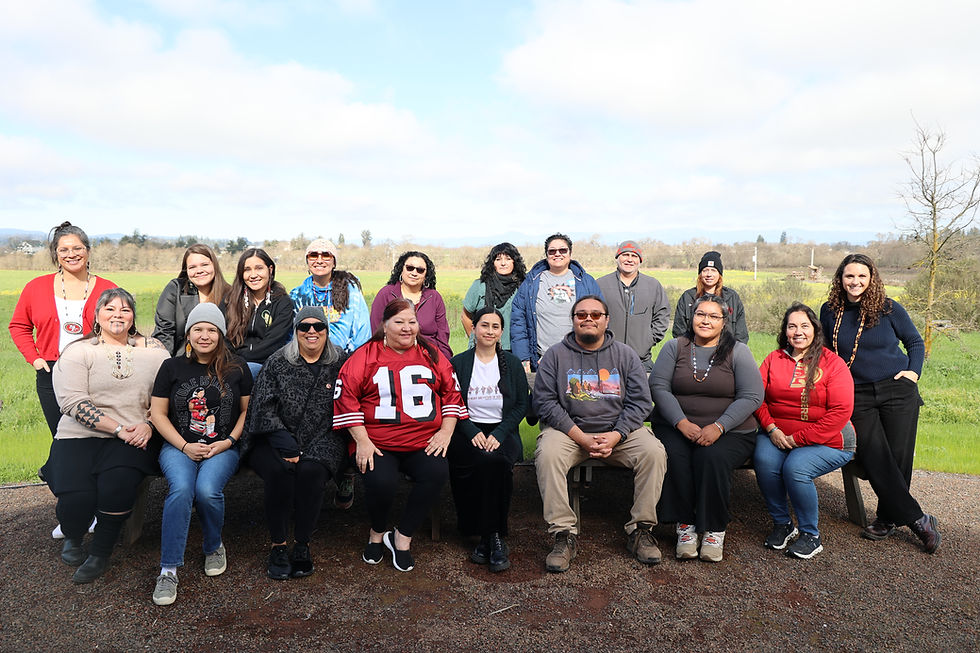GBLA Resource: How Easements Empower Native Communities
- Redbud Resource Group

- May 25, 2023
- 3 min read

Native communities across the country are working hard to safeguard Indigenous lifeways while also protecting the planet’s biodiversity. And yet, with little access to land, Native communities must use all the tools they can to increase their landbases, and with that, their ability to rekindle cultural stewardship practices needed to mitigate climate change, improve community health, and more.
One approach for increasing Native land access is through the use of easements, which serve as powerful tools for supporting Native communities in their conservation and cultural restoration practices.
Let’s explore how easements can contribute to the preservation of both natural environments and Indigenous traditions, ultimately empowering Native communities!
What is an easement?
An easement is a legal agreement that grants individuals or organizations the right to use or protect a specific property. Through easements, landowners can voluntarily commit to conserving their lands, including critical habitats, forests, or culturally important areas, while still maintaining ownership. This conservation practice allows the lands to remain intact and accessible for future generations.

Photo Source: Inés Ixierda with Sogorea Te’ Land Trust. On December 13 members of Sogorea Te’ Land Trust, The Confederated Villages of Lisjan Nation, the City of Oakland and hundreds of supporters gathered to sign and celebrate the signing of a historic cultural easement returning the land formerly known as Sequoia Point to Indigenous stewardship.
How do easements preserve ecological landscapes?
2. With the practice of Traditional Ecological Knowledge (TEK), easements provide Native communities with the means to protect ecologically sensitive areas that are integral to their cultural identity. Many Native cultures possess profound connections with the land, considering it sacred and imbued with spiritual significance. By establishing easements, these communities can preserve their ancestral territories, protect wildlife habitats, safeguard water sources, and maintain the ecological balance of the area. These efforts contribute to the broader conservation movement while respecting the indigenous knowledge and relationship with the land.
How do easements help safeguard traditional practices?
3. Easements not only facilitate the protection of natural landscapes but also support the restoration and continuation of traditional practices within Native communities. These practices, such as farming, hunting, gathering, and spiritual rituals, are deeply rooted in cultural heritage. By securing easements, Native communities can maintain access to traditional lands for these practices. This ensures the vitality of Indigenous cultures and strengthens their ability to pass on traditional knowledge to future generations.
How do easements foster collaborative partnerships?
4. Easements provide opportunities for collaborative partnerships between Native communities, conservation organizations, and government agencies. By working together, partners can pool resources, expertise, and support to achieve shared conservation and cultural restoration goals. Collaborative easement programs create dialogue, respect Indigenous sovereignty, and provide financial assistance for land management and restoration efforts. These collaborations create a comprehensive way that respects the cultural importance of Ancestral lands, promotes ecological sustainability, and brings mutual benefits to all participants.

Photo Source: Courtesy of Sogorea Te’ Land Trust, 2022. Plans for Rinihmu Pulte’irekne ( formerly Sequoia Point, in Joaquin Miller Park, Oakland, California) include creating a ceremonial space for Indigenous peoples and guests to gather and share, and for members of the Lisjan Ohlone Nation to practice their cultural lifeways.
How do easements empower Native communities?
5. The use of easements empowers Native communities by granting them decision-making authority and enabling self-determination in land management. Through the establishment of easements, Native communities gain control over their Ancestral lands and can shape conservation and restoration plans in alignment with their cultural values. This empowerment enhances community resilience, supports pride in cultural heritage, and allows the exchange of intergenerational knowledge.
The bridging of conservation and cultural restoration through easements presents a promising pathway for supporting Native communities. These legal agreements facilitate the preservation of natural landscapes, protection of ancestral territories, and continuation of traditional practices. By nurturing collaborative partnerships and empowering Native communities, easements can serve as vital tools for sustainable development, cultural revitalization, and the promotion of environmental stewardship. By recognizing the importance of cultural heritage and incorporating Indigenous perspectives, we can forge a harmonious relationship between conservation efforts and the well-being of Native communities.
If you missed our thought-provoking Facebook Live Event on 'A Conversation on Cultural Easements'? Don't worry, we've got you covered!
Check out the video recording below of Brendan Moriarty, the Real Property Asset Manager for the City of Oakland, as he shares his insights on cultural easements in collaboration with Sogorea Té Land Trust. Watch now and expand your understanding of how we can work collectively to support Native communities reclaim and strengthen their cultural sovereignty.
To check out more of Redbud Resource Group's GBLA resources, click the button below:







Comments